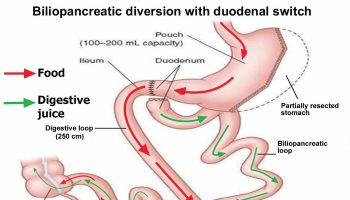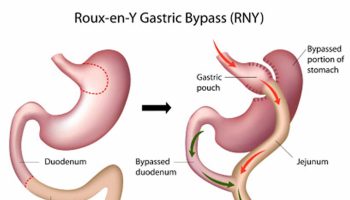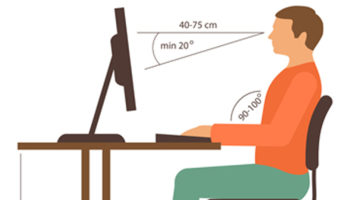Contents
- What are the 5 Steps to Achieving Weight Loss Goals
- Step 1. Choose your weight loss goals
- Body Weight Planner. https://www.supertracker.usda.gov/bwp/index.html
- ChooseMyPlate. https://www.choosemyplate.gov/
- SuperTracker website: https://supertracker.usda.gov
- BMI Calculator Adults. https://www.cdc.gov/healthyweight/assessing/bmi/adult_BMI/english_bmi_calculator/bmi_calculator.html
- BMI Calculator Children. https://nccd.cdc.gov/dnpabmi/Calculator.aspx
- Step 2. Identify and don’t tolerate the Problems
- Step 3. Accurately Diagnose the Problems.
- Step 4. Design plans that explicitly layout tasks that will get you around your problems and on to your goals.
- Step 5. TAKE MASSIVE and INSPIRED ACTION. Do the tasks and implement those plans.
- Step 1. Choose your weight loss goals
What are the 5 Steps to Achieving Weight Loss Goals
If you are overweight, it’s usually because you eat and drink more calories than you need (Calories In is greater than Calories Out). In order to achieve your weight loss goal, you will to reduce the number of calories you consume. Because no matter how healthily you eat, you can still put on weight if you’re eating too much and gain weight. For most men, this will mean consuming no more than 1,900kcal a day and for most women, 1,400kcal. You can also get your own personal calorie target by using the tools (SuperTracker, Body Weight Planner and ChooseMyPlate) and BMI calculator (see below).
Before starting, visit:
- Body Weight Planner. https://www.supertracker.usda.gov/bwp/index.html
To find out about how many calories you should eat to lose weight according to your weight, age, sex, height and physical activity, you can use a FREE online app Body Weight Planner 1
- ChooseMyPlate. https://www.choosemyplate.gov/
To find out about the 5 Food Groups you should have on your plate for a meal, you can use a FREE online app ChooseMyPlate 2
- SuperTracker website: https://supertracker.usda.gov
To find out What and How Much To Eat, you can use a FREE, award-winning, state-of-the-art, online diet and activity tracking tool called SuperTracker 3 from the United States Department of Agriculture Center for Nutrition Policy and Promotion 3. This free application empowers you to build a healthier diet, manage weight, and reduce your risk of chronic diet-related diseases. You can use SuperTracker 3 to determine what and how much to eat; track foods, physical activities, and weight; and personalize with goal setting, virtual coaching, and journaling.
- BMI Calculator Adults. https://www.cdc.gov/healthyweight/assessing/bmi/adult_BMI/english_bmi_calculator/bmi_calculator.html
- BMI Calculator Children. https://nccd.cdc.gov/dnpabmi/Calculator.aspx
To find out about your body mass index (BMI), you can use a FREE online BMI calculators from the Centers for Disease Control and Prevention (CDC) – for Adults 4 and for Children 5
A large body of evidence now shows that healthy eating patterns and regular physical activity can help people achieve and maintain good health and reduce the risk of chronic disease throughout all stages of the lifespan.
Step 1. Choose your weight loss goals
About your weight and your reason why you need to lose weight:
- Do you need to lose weight ?
- WHY do you want to lose weight ? Is it for your own personal reason (e.g. due to poor health, obesity related problems and complications) ? Or are you trying to satisfy other people’s opinion about you ? The strongest and long-term weight loss reason is always from your own personal want – “Your WHY.” Why do you want to lose weight ? Your WHY will keep you going when the times are tough and challenging. When you feel like giving up. Without your WHY – most people will give up and regain plus more of their original excess weight.
- What is a healthy weight for you ? Use the Body Mass Index (BMI) online calculators for Adults 4 or Children 5.
- How much weight should you lose ? Use the Body Weight Planner 1, ChooseMyPlate 2 and SuperTracker 6 to help you.
- Could your extra weight be caused by a health problem or by a medicine you’re taking ?
Make sure you have a clear target weight. Ideally, you should aim for a target weight that gives you a BMI in the healthy weight category for your height (18.5 to 24.9 kg/m²).
Set your weight loss goals without assessing whether or not you can achieve them. This requires some faith that you really can achieve anything, even if you don’t know how will do it at that moment. For example, you are 100 kgs and you want to achieve a healthy weight of say 55 kgs.
Research shows that it takes about 12 weeks on average to form new habits. By sticking to this routine for three months, healthy eating and regular exercise will become habits, which are key to losing weight and keeping it off.
Short term weight changes are typically driven primarily by water weight. For most people it is hard to lose more than 1 to 2 pounds per week. Trying to lose weight too quickly for most people can lead to serious health issues. The ideal weight loss goal is follow a basic rule of thumb on weight and calories: Each pound of body weight loss is equivalent to 3,500 calories, so a 500 calorie daily deficit would lead to losing 1 pound per week.
Body Weight Planner. https://www.supertracker.usda.gov/bwp/index.html
The Body Weight Planner 1 allows users to make personalized calorie and physical activity plans to reach a goal weight within a specific time period and to maintain it afterwards.
- To find out about how many calories you should eat to lose weight according to your weight, age, sex, height and physical activity, you can use a FREE online app Body Weight Planner 1
Use SuperTracker 6 to get a personalized meal plan based on your calorie results from the Body Weight Planner 1. SuperTracker is a free food, physical activity, and weight tracking tool from ChooseMyPlate.gov 2.
ChooseMyPlate. https://www.choosemyplate.gov/
- To find out about the 5 Food Groups you should have on your plate for a meal, you can use a FREE online app ChooseMyPlate 2
SuperTracker website: https://supertracker.usda.gov
- To find out What and How Much To Eat, you can use a FREE, award-winning, state-of-the-art, online diet and activity tracking tool called SuperTracker 3 from the United States Department of Agriculture Center for Nutrition Policy and Promotion 3. This free application empowers you to build a healthier diet, manage weight, and reduce your risk of chronic diet-related diseases. You can use SuperTracker 3 to determine what and how much to eat; track foods, physical activities, and weight; and personalize with goal setting, virtual coaching, and journaling.
BMI Calculator Adults. https://www.cdc.gov/healthyweight/assessing/bmi/adult_BMI/english_bmi_calculator/bmi_calculator.html
BMI Calculator Children. https://nccd.cdc.gov/dnpabmi/Calculator.aspx
- To find out about your body mass index (BMI), you can use a FREE online BMI calculators from the Centers for Disease Control and Prevention (CDC) – for Adults 4 and for Children 5
Step 2. Identify and don’t tolerate the Problems
Identify the problems that stand in the way of you achieving your target weight. It’s vitally important that you have identified and bring the problems to the surface. The more painful the problem, the louder it is screaming.
Losing weight isn’t just diet and exercise, it requires a whole lifestyle change. Rather than following celebrity diets or hoping for a quick fix, losing weight in a healthy, lasting manner is much more likely with careful diet change and the right exercise regimen. Lifestyle and habit changes don’t happen in a day, but because of the amount of effort that goes into making those changes, you’re more likely to develop habits that give you lasting results.
Step 3. Accurately Diagnose the Problems.
In order to be successful with your weight loss, you have to
- a) Become Aware of the Problems,
- b) Be Precise in specifying your problems and
- c) Not tolerate them. When identifying the problems – it’s important to remain centered and logical.
Step 4. Design plans that explicitly layout tasks that will get you around your problems and on to your goals.
Focus on designing strategies and solutions. Be calm and logical.
Step 5. TAKE MASSIVE and INSPIRED ACTION. Do the tasks and implement those plans.
It is essential you approach this process in a very clear-headed and rational way. Remove emotions – which are often difficult, but will produce good results. If emotions are getting the better of you, take timeout until you can reflect unemotionally and seek the guidance of calm, thoughtful others.
Stay centered and effective. Treat weight loss like a game – your mission is to figure out how to get around your weight loss challenges in order to get to your ideal weight (weight loss goal and target).
It’s really up to you to take full responsibility to connect what you want with what you need to do to get it and the do those things.
Life will give you what you deserve and it doesn’t really give a damn what you want or like.
The important thing is to keep pushing and moving forward towards your weight loss goal – while recognizing the consequences of your actions.
Nobody likes counting calories, but it’s no secret that portion control is one of the key factors in losing weight. Changing your diet doesn’t have to revolve around calorie counting, however. Other methods of portion control exist to help you manage how much you eat in a day. The size of your plates and bowls may also have a lot to do with portion control. If you have large dinner plates, the temptation is there to fill them up. Try dining from a side plate instead, and eat slowly so your body has a chance to register that you’re no longer hungry. Measuring cups are also useful. If you want a snack, allow yourself half a cup. Measure it into a bowl and don’t refill. It’s a lot easier to manage portions when you measure them.
When it’s hard or difficult, remember that in the long run, losing weight, having a healthy eating habit, great lifestyle and healthy body – are a lot easier than having type 2 diabetes, osteoarthritis in your legs, high blood pressure and heart disease.
If you have not achieve your weight loss goals, it tells you that you have not been creative or flexible or determined enough to do what it takes. Go back and figure out what you need to do about this situation.
Summary
Weight gain in adulthood is often gradual, about a pound a year 7 too slow of a gain for most people to notice, but one that can add up, over time, to a weighty personal and public health problem. There’s increasing evidence that the same healthful food choices and diet patterns that help prevent heart disease, diabetes, and other chronic conditions may also help to prevent weight gain:
- Choose minimally processed, whole foods-whole grains, vegetables, fruits, nuts, healthful sources of protein (fish, poultry, beans), and plant oils.
- Limit sugared beverages, refined grains, potatoes, red and processed meats, and other highly processed foods, such as fast food.
Though the contribution of any one diet change to weight control may be small, together, the changes could add up to a considerable effect, over time and across the whole society 7. Since people’s food choices are shaped by their surroundings, it’s imperative for you to make to environmental changes that make healthy foods more accessible and decrease the availability and marketing of unhealthful foods.
- Body Weight Planner. https://www.supertracker.usda.gov/bwp/index.html[↩][↩][↩][↩][↩]
- ChooseMyPlate. https://www.choosemyplate.gov/[↩][↩][↩][↩]
- https://supertracker.usda.gov/[↩][↩][↩][↩][↩][↩]
- BMI Calculator Adults. https://www.cdc.gov/healthyweight/assessing/bmi/adult_BMI/english_bmi_calculator/bmi_calculator.html[↩][↩][↩]
- BMI Calculator Children. https://nccd.cdc.gov/dnpabmi/Calculator.aspx[↩][↩][↩]
- SuperTracker. https://supertracker.usda.gov[↩][↩]
- Mozaffarian D, Hao T, Rimm EB, Willett WC, Hu FB. Changes in diet and lifestyle and long-term weight gain in women and men. N Engl J Med. 2011;364:2392-404. https://www.ncbi.nlm.nih.gov/pmc/articles/PMC3151731/[↩][↩]





